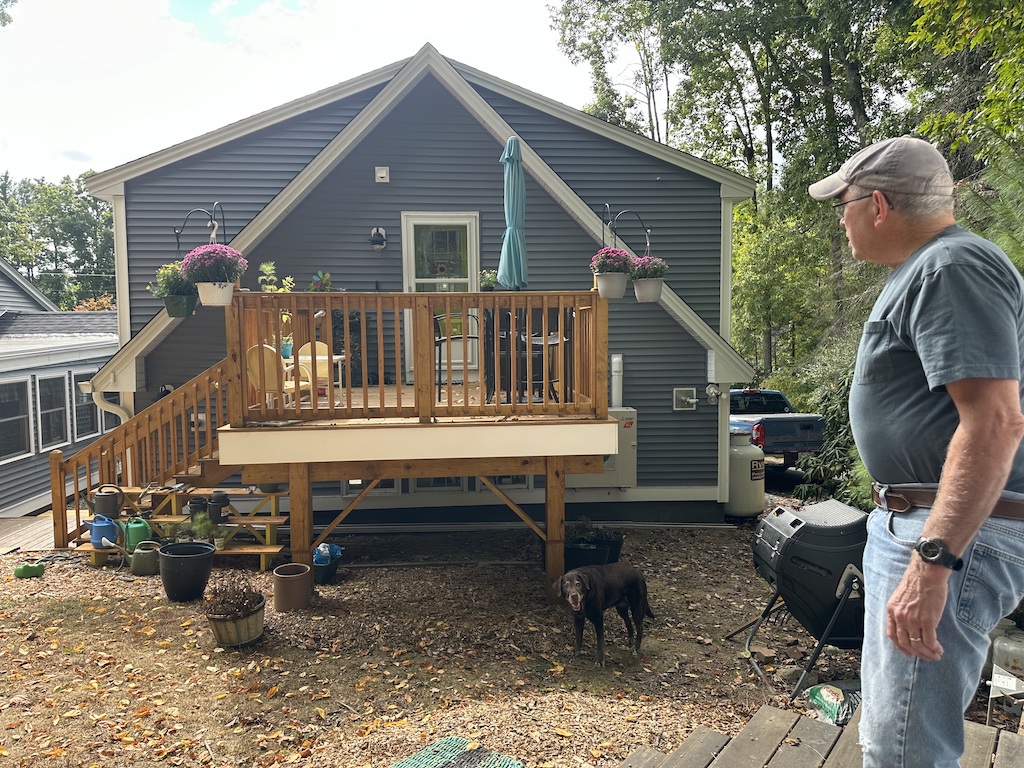Read more Stateline coverage of how communities across the country are trying to create more affordable housing.
NEWMARKET, N.H. — Ron Durand’s property, home to two dwellings including an accessory unit above the garage, highlights Newmarket’s relaxed housing regulations. His daughter and granddaughter reside in this first accessory dwelling unit (ADU) developed after the town eased its rules. ADUs, or “granny flats,” have been part of American housing for decades, but now they are increasingly seen as a solution to housing shortages.
ADUs present a more affordable option compared to new homes and often face less opposition than large developments. However, some residents express concerns over increased density leading to parking, traffic, and utility issues.
The town, which hosts around 5,800 residents, has shifted its stance toward supporting ADUs after previously hindering such developments due to bureaucratic challenges. Durand advocates for more homeowners to consider building ADUs, though he admits it may not suit every property.
“Not all situations are probably this ideal,” Durand noted. His neighbor is also embracing this trend, constructing a small home for aging parents, which allows younger family members to occupy the main house. Durand’s project cost $300,000, contrasting sharply with nearby condos priced at $900,000.
Policymakers nationwide aim to increase ADU availability, with 14 states and D.C. passing supportive laws, as per the Mercatus Center. California’s 2016 legislation notably spurred ADU growth, resulting in over 83,000 permits by 2022, especially in costly markets like Los Angeles.
Sen. Greg Hertz of Montana believes ADUs can be developed anywhere, promoting them through legislation that limits municipal restrictions. “We just need to do a lot of different things,” he stated, emphasizing their role in addressing housing crises.
ADUs are often preferred by planners due to their potential to enhance housing density without altering neighborhood aesthetics. Jason Jordan from the American Planning Association considers them a “gateway drug of zoning reform,” as they provide rental income or house family members needing smaller spaces.
While ADUs grow in popularity, most municipalities still ban them through zoning regulations. Even when state laws permit ADUs, local governments can create hurdles. States like California have revised ADU laws to remove barriers like parking requirements.
Montana’s Supreme Court recently ruled against homeowners opposing ADUs, highlighting ongoing resistance from some who fear property value declines. In New Hampshire, Rep. Ellen Read’s legislation to simplify ADU creation faced setbacks but continues to push for reform.
Newmarket has already relaxed ADU zoning, allowing detached units and easing parking requirements. The town’s planning director, Bart McDonough, remarked, “The zoning was really kind of out of touch with reality and what the community wanted.”
In Dover, a credit union partnership aids homeowners lacking equity to finance ADU construction. A regional design competition in New Hampshire attracted wide interest, reflecting a growing acceptance of ADUs.
Communities like Keene and Peterborough are also adapting, with Keene adding six ADUs since 2017 and Peterborough showcasing existing units to ease resident concerns. “They’re hiding in plain sight,” said Danica Melone, Peterborough’s planning director, about the ADUs.
Peterborough’s ADUs contribute significantly to local housing availability, with each unit providing opportunities for new residents and supporting the town’s tax base.
This story was originally produced by Stateline which is part of States Newsroom, a nonprofit news network, including the Daily Montanan, supported by grants and a coalition of donors as a 501c(3) public charity.
“`





